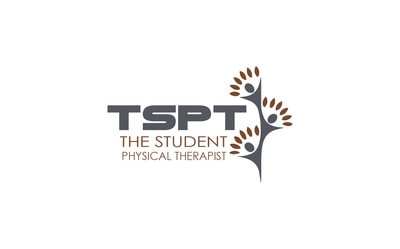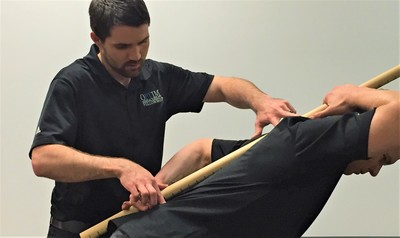- Home
- About Us
- TSPT Academy
- Online Courses
-
Resources
- Newsletter
- Business Minded Sports Physio Podcast
- Day in the Life of a Sports PT
- Residency Corner
-
Special Tests
>
-
Cervical Spine
>
- Alar Ligament Test
- Bakody's Sign
- Cervical Distraction Test
- Cervical Rotation Lateral Flexion Test
- Craniocervical Flexion Test (CCFT)
- Deep Neck Flexor Endurance Test
- Posterior-Anterior Segmental Mobility
- Segmental Mobility
- Sharp-Purser Test
- Spurling's Maneuver
- Transverse Ligament Test
- ULNT - Median
- ULNT - Radial
- ULNT - Ulnar
- Vertebral Artery Test
- Thoracic Spine >
-
Lumbar Spine/Sacroiliac Joint
>
- Active Sit-Up Test
- Alternate Gillet Test
- Crossed Straight Leg Raise Test
- Extensor Endurance Test
- FABER Test
- Fortin's Sign
- Gaenslen Test
- Gillet Test
- Gower's Sign
- Lumbar Quadrant Test
- POSH Test
- Posteroanterior Mobility
- Prone Knee Bend Test
- Prone Instability Test
- Resisted Abduction Test
- Sacral Clearing Test
- Seated Forward Flexion Test
- SIJ Compression/Distraction Test
- Slump Test
- Sphinx Test
- Spine Rotators & Multifidus Test
- Squish Test
- Standing Forward Flexion Test
- Straight Leg Raise Test
- Supine to Long Sit Test
-
Shoulder
>
- Active Compression Test
- Anterior Apprehension
- Biceps Load Test II
- Drop Arm Sign
- External Rotation Lag Sign
- Hawkins-Kennedy Impingement Sign
- Horizontal Adduction Test
- Internal Rotation Lag Sign
- Jobe Test
- Ludington's Test
- Neer Test
- Painful Arc Sign
- Pronated Load Test
- Resisted Supination External Rotation Test
- Speed's Test
- Posterior Apprehension
- Sulcus Sign
- Thoracic Outlet Tests >
- Yergason's Test
- Elbow >
- Wrist/Hand >
- Hip >
- Knee >
- Foot/Ankle >
-
Cervical Spine
>
- I want Financial Freedom
- I want Professional Growth
- I want Clinical Mastery
Gaenslen Test
Purpose: To assess for pain originating from the sacroiliac joint.
Test Position: Supine.
Performing the Test: The non-tested leg is kept in extension, while the tested leg is placed in maximal flexion. The examiner then places one hand on the anterior thigh of the non-tested leg and the other hand on the knee of the tested leg to apply a flexion overpressure (alternate position is on posterior thigh, proximal to knee, for patients that have knee pathology). The extended leg may also be placed off the table to create a greater force. A positive test occurs if it produces low back pain.
Diagnostic Accuracy: Sensitivity: .71; Specificity: .26; -LR: 1.12; +LR: 1.0 ("Pain provocation tests for the assessment of sacroiliac joint dysfunction").
Importance of Test: The test functions by stressing the tissues on the posterior side of the pelvis and creating motion at the sacroiliac joint. Due to the low diagnostic accuracy of this test, it is not useful in triangulating pain originating from the sacroiliac joint. This test pay appear positive on patients with hip pathology as well. The extreme flexed hip position is often painful/uncomfortable for patients with femoral acetabular impingment or labral dysfunction.
Note: tests should only be performed by a properly trained health care practitioner.
Test Position: Supine.
Performing the Test: The non-tested leg is kept in extension, while the tested leg is placed in maximal flexion. The examiner then places one hand on the anterior thigh of the non-tested leg and the other hand on the knee of the tested leg to apply a flexion overpressure (alternate position is on posterior thigh, proximal to knee, for patients that have knee pathology). The extended leg may also be placed off the table to create a greater force. A positive test occurs if it produces low back pain.
Diagnostic Accuracy: Sensitivity: .71; Specificity: .26; -LR: 1.12; +LR: 1.0 ("Pain provocation tests for the assessment of sacroiliac joint dysfunction").
Importance of Test: The test functions by stressing the tissues on the posterior side of the pelvis and creating motion at the sacroiliac joint. Due to the low diagnostic accuracy of this test, it is not useful in triangulating pain originating from the sacroiliac joint. This test pay appear positive on patients with hip pathology as well. The extreme flexed hip position is often painful/uncomfortable for patients with femoral acetabular impingment or labral dysfunction.
Note: tests should only be performed by a properly trained health care practitioner.
References:
Broadhurst N, Bond M. "Pain provocation tests for the assessment of sacroiliac joint dysfunction." J Spinal Disorders 1998; 11: 341-345.
Broadhurst N, Bond M. "Pain provocation tests for the assessment of sacroiliac joint dysfunction." J Spinal Disorders 1998; 11: 341-345.
Copyright © The Student Physical Therapist LLC 2023




